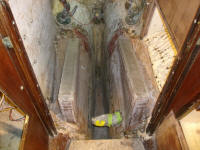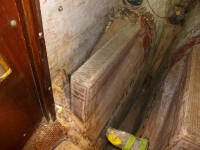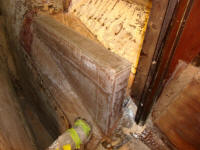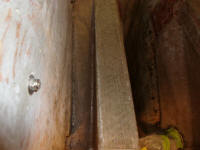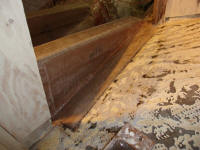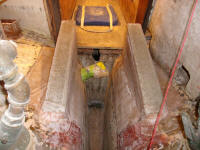
110 Cookson Lane | Whitefield, ME 04353 | 207-232-7600 | tim@lackeysailing.com
Blue Teal | Tuesday, June 18, 2013
With all the glasswork complete, the engine foundations required just a light washing and sanding to remove any sharp edges and prepare the surfaces for the work ahead.
Over the course of the morning, using a throwaway sprayer, I applied three coats of epoxy primer to the windlass riser base.

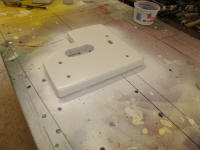
Meanwhile, after final preparations and masking in the interior, I applied a coat of white Bilgekote to the starboard head locker, and the outboard galley lockers. Nearby areas of the galley that were to be painted would later receive "real" interior paint for a nicer finish, and other adjacent surfaces would later be covered in cork.

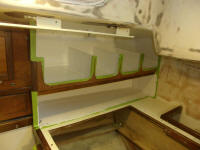
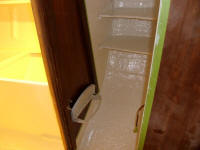
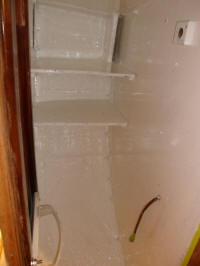
To provide a secure mounting for the starting battery, I prepared a platform just to port of the engine room, in a space nearly tailor-made for the purpose. After cutting a plywood blank to the right size for the battery base (and just a bit longer to allow for a sturdy cleat at the aft end to hold the battery), I held it level in the space and marked for support cleats at the inboard corner, which I then glued and screwed into position.
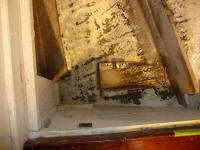
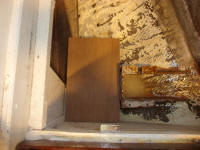
At the aft end, I built a little support between the hull and the base of the platform, and secured it to the platform with a cleat, glue, and screws, before epoxy-coating the edges and underside of the assembly.
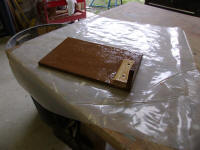
Later, I installed the assembly with more thickened epoxy adhesive, securing it to the cleats, adjacent bulkheads and other surfaces, and to the hull with fillets as needed. Then, I coated the top surface of the platform with epoxy as well. I left portions of the "uphill" side of the area open to allow through-drainage of any water.
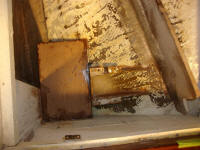
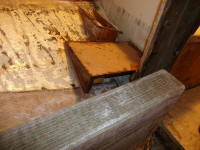

For accessibility, ease of maintenance, and to avoid overheating issues, the owner requested that the alternator regulator, starting battery charger (Duo-charge), and other items be mounted on the interior face of the cockpit well, just above the engine room. To provide a suitable mounting surface for these and other components as necessary, I built a plywood panel to cover the area, leaving it a bit shy of all the space's edges. I milled an edge detail on the exposed plywood edges and sanded the panel smooth before securing it with dabs of epoxy adhesive and, to hold it while the glue cured, hot glue as necessary.

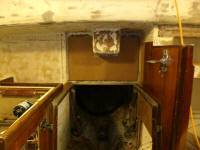
Planning ahead for the engine installation, I installed a new exhaust outlet, a cast bronze one featuring an external flange to prevent dribbles down the hull (and also to allow the owner to run his engine indoors by clamping piping to the exposed flange). I located the new outlet in the port counter, and installed it with polyurethane sealant and bronze bolts in tapped holes. I'd cut off the excess bolt length inside the boat later, once the sealant cured.
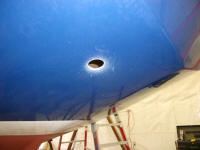
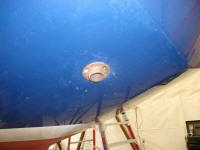
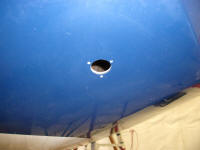
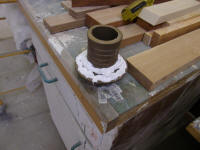
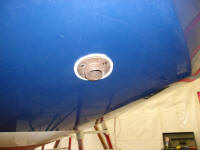
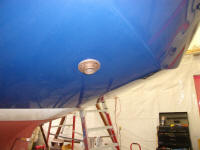

The old exhaust outlet on the starboard side was slated to be retasked as the main bilge pump outlet. Fortunately, the fitting itself was the correct size, 1-1/2", but had previously been equipped with a 2" adapter to fit the original exhaust hose. With a large wrench, I had no problem removing the adapter to prepare the through hull for the bilge pump hose later.
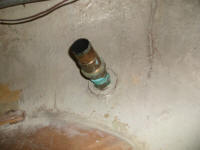
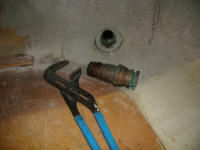
At the end of the day, I had a few moments to go through the parts and supplies that came with the boat, getting organized and seeing exactly what I had on hand for some of the upcoming tasks on my list. Among these items was a new solar panel and support pole, which I unpacked with plans to install the deck base in the near future.
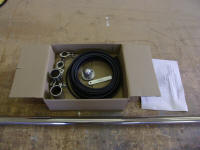
Finally, with paint leftover from the morning's work on the windlass platform, I coated the new fiberglass engine foundations with epoxy primer to allow me to continue painting work in the engine room sooner than later, rather than wait just about forever for the epoxy to cure sufficiently to allow overcoating with Bilgekote. The epoxy primer would act as a tie coat and allow the Bilgekote to cure properly without requiring a long down time. I only applied the primer to the new fiberglass.

Total Time on This Job Today: 9 hours
